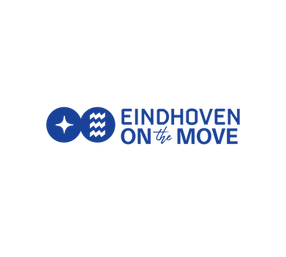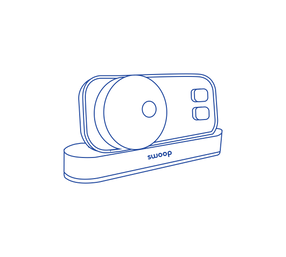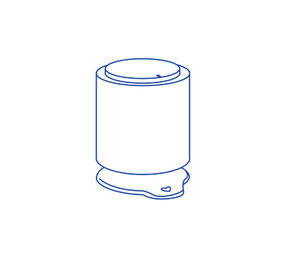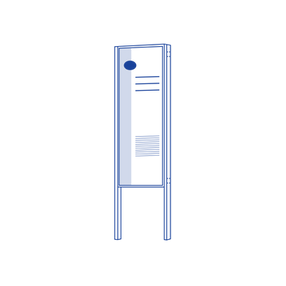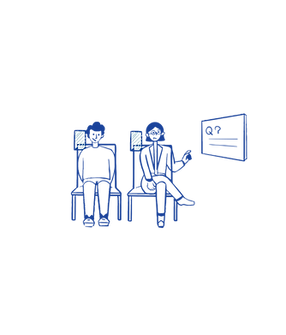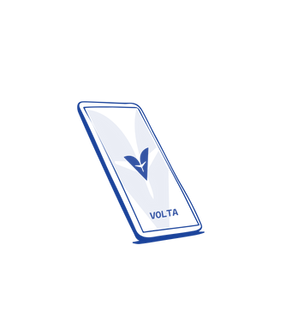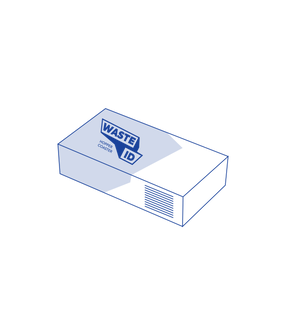

Past
In this section, I reflect on my journey from my bachelor to my final master project using my main learning goals. For each section, I reflect on the change in my style and for each goal, the outcomes of the learning activities are listed.
With a B.Sc. in Healthcare Engineering and having worked for a time at a Med Tech startup, I developed skills such as qualitative analysis and 3D design. However, I longed for something more personal. I wanted to work "with" my patients rather than "in" them. I longed for more interaction, a facet often lacking in the traditional role of engineer. In industrial design, I found the perfect mix of interaction with people and basic engineering knowledge.
Moving from an engineer to a designer was difficult but challenging. It pushed me away from strict rules (requirements) to a more experimental, step-by-step design process (holistic). Academic research, in-depth analysis, detailed methods and user testing greatly influenced my way of working and developed me into a facilitator of design ideation.
-
Once on this path, the first step was to find a unique area that needed my design skills - an area that would fuel my passion and where I could benefit from what I know.
-
My next goal was to refine a specialised set of skills in this area. This was an important step towards becoming a true industrial designer, supported by my fellow designers.
-
The third goal was to showcase my work effectively. I wanted others to learn from it, work with it and use it as a starting point for their own work. I wanted to create an environment of continuous growth and innovation.
-
A crucial part of my academic journey was moving from an engineering vision to a complete design vision, with a focus on human-centred design, the integration of emerging technology and a holistic view.
-
Finally, I wanted to strengthen my collaboration with various stakeholders and experts. This was to encourage joint learning, involve them in my development process and expand my professional circle.
Later, I refined these goals into two clear learning objectives:
-
Immersing myself in understanding how people interact with new technologies, focusing especially on human-computer interaction.
-
Pushing for a design approach that puts the user first, specifically in the field of usability design.
I've focused on exploring how people interact with computers and how we can design for the user, through lenses of creativity, practical interaction, and the relationship between the user and society.
Understanding how people interact with new technologies.
To delve into human-technology interactions, especially human-computer interaction, I strategically enrolled in the focused courses : Creativity and Aesthetics of Data & AI (A-eyes), Researching the Future Every Day (On the Move) a designerly perspective on IoT (Swoop) Aesthetics of interaction (Spot)
The courses showed me my unique area where I could apply my design skills. They gave me a comprehensive understanding of speculative research artefacts (on the move) and furthered my skill in conducting future-oriented user studies.
In addition, they gave me insight into the added value of tangible interactions (Swoop, A-eyes), where interaction and form work together with final function. Principles from Spot's forms follows function. Through physical application, I developed the ability to create intuitive and innovative interactive products (Spot, Swoop, A-eyes"). Within the context of human collaboration with emerging technologies, these courses strengthened my understanding of aesthetic value in creating research products.
Moreover, these courses enabled me to critique the limitations and implications of emerging technologies such as AI for the design and aesthetics of everyday products, systems, and services (A-eyes). This critical perspective provided a more nuanced understanding of the intersection of design and technology. Moreover, they improved my ability to see opportunities and set requirements for AI-specific design. This was an important step in my quest to improve human collaboration with emerging technologies (Visul).
A design approach that puts
the user first
To delve deeper into user inclusion in the design process, I chose the courses-"Design for Social Innovation", "Design for Behavioural Change" and "Designing with multiple stakeholders"-and made a crucial transition from a traditional engineer to a designer focused on human interaction and usability.
My exposure to the principles of the courses led to an in-depth understanding of inclusiveness of users and social implications when designing user-centred solutions (Talk a talk /Volta). In doing so, my approach was to build around the individual user experience and weave this experience into a broader social context (Talk a talk / Bip project berlin).
By translating theoretical underpinnings into interactive designs, I refined my ability to create collaborative solutions ( Visul / Koos) with an emphasis on user behaviour change (Talk a Talk). This resulted in promoting more social interaction in shared spaces such as public transport, increasing a sense of community and inclusiveness (Volta / Talk a talk).
The last course gave me the ability to approach complex environments with multiple stakeholders (Koos / Visul) with empathy, paving the way for inclusive solutions. This included embracing the unique needs of individuals, such as people with dementia, by ensuring their voices were heard and included in design processes.
On reflection, my design background has evolved towards inclusiveness, user-centricity and user experience, as evidenced by the increased user engagement within Visul. This embodies my growth and the invaluable lessons learnt during these transformative courses, and structures my way for applying user-centred design methods.

